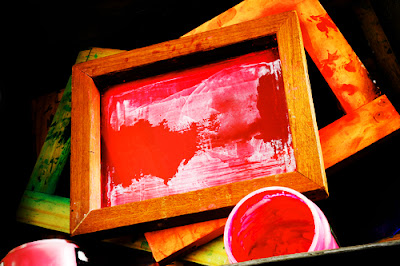When screen printing polycarbonate film, learn what causes ink adhesion problems.
The $64 question is: what causes ink adhesion problems when screen printing polycarbonate film? While some have suggested moisture absorption as the culprit, the most likely candidate is exposure to UV light and oxygen. As the polycarbonate absorbs UV light, it excites the photons of the atoms, which in turn creates free radicals. Free radicals are atoms with a few extra electrons. These extra electrons make free radicals highly reactive, or what I like to think of as being chemically promiscuous. These free radicals chemically react with any impurities in the polycarbonate film, such as sodium. The result of this reaction is degradation of the polycarbonate. This is why the film can yellow and become brittle.
Surface Degradation
Degradation can occur with or without oxygen. With it, though, the problem is much worse. Here’s why. The oxygen reacts with the polycarbonate breaking the molecular chain especially where one carbon atom bonds with another carbon atom or with an oxygen atom. Without oxygen, degradation still occurs because UV radiation initiates cross linking. This process is called photo-oxidation. The by-products of these chemical reactions are the creation of H2, H2O, CO and CO2.
As polycarbonate oxidizes, the surface breaks down. As the outer layer or skin of the film degrades, it becomes very weak and molecular debris accumulates on the surface. When older polycarbonate film is screen printed, the loose debris forms a barrier between the unaffected part of the film and the ink. Because the ink adheres to this debris, ink adhesion is poor.



